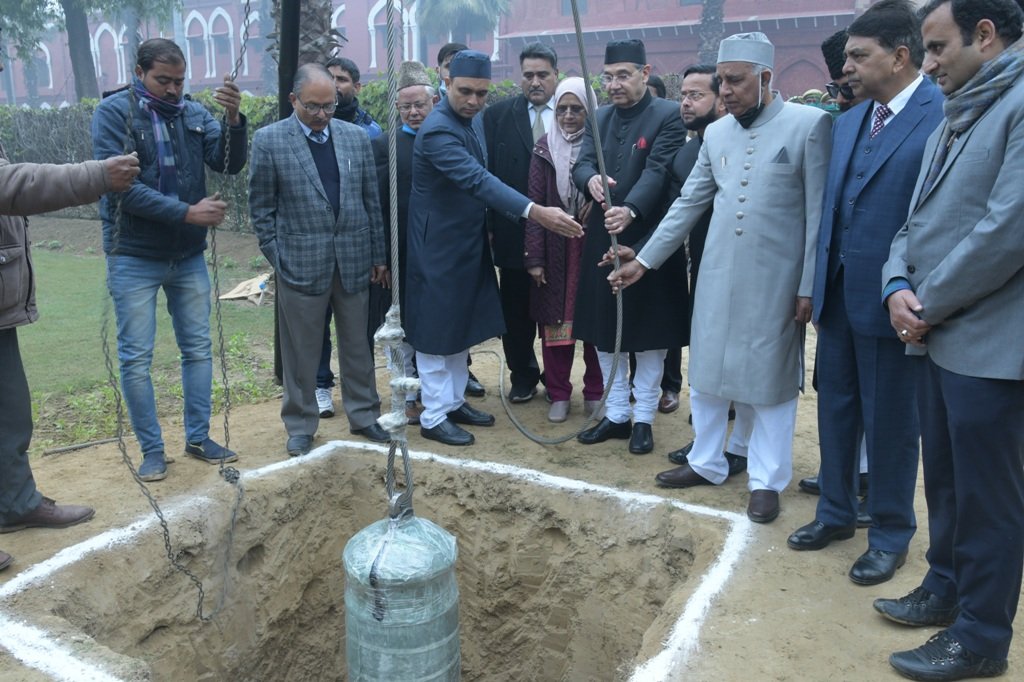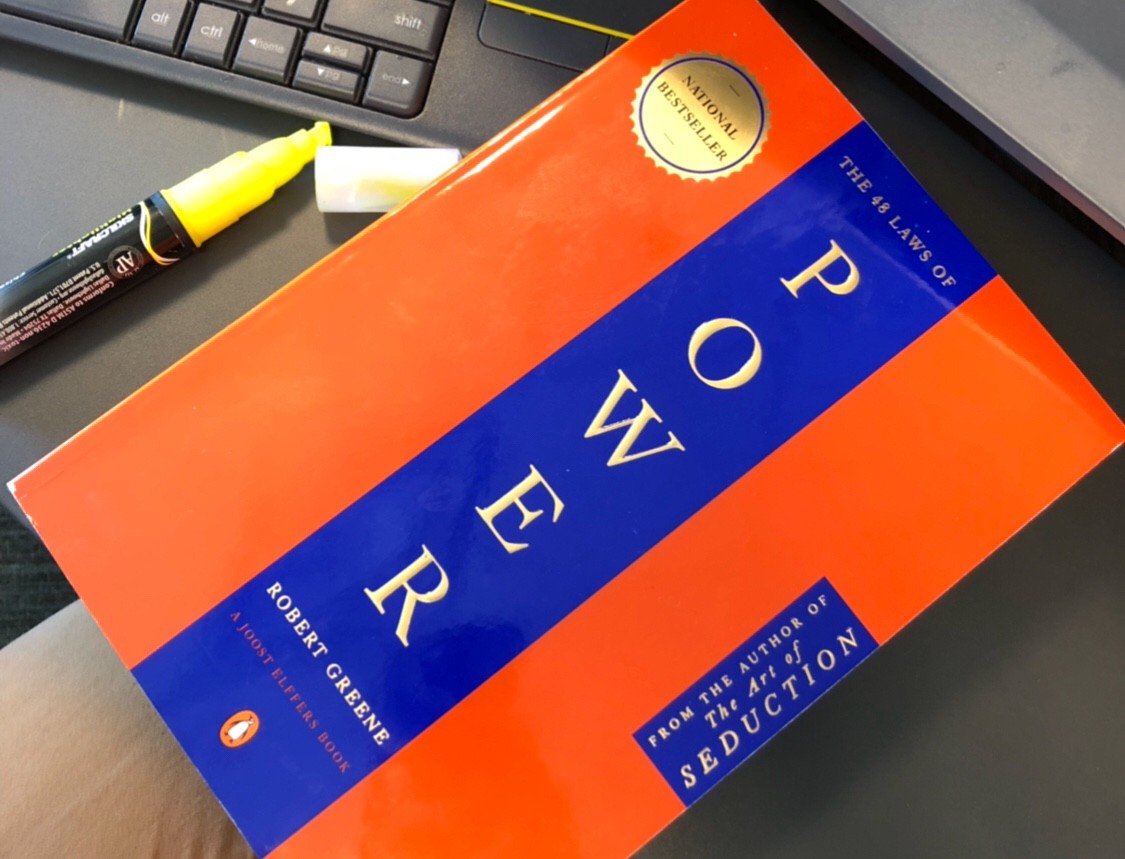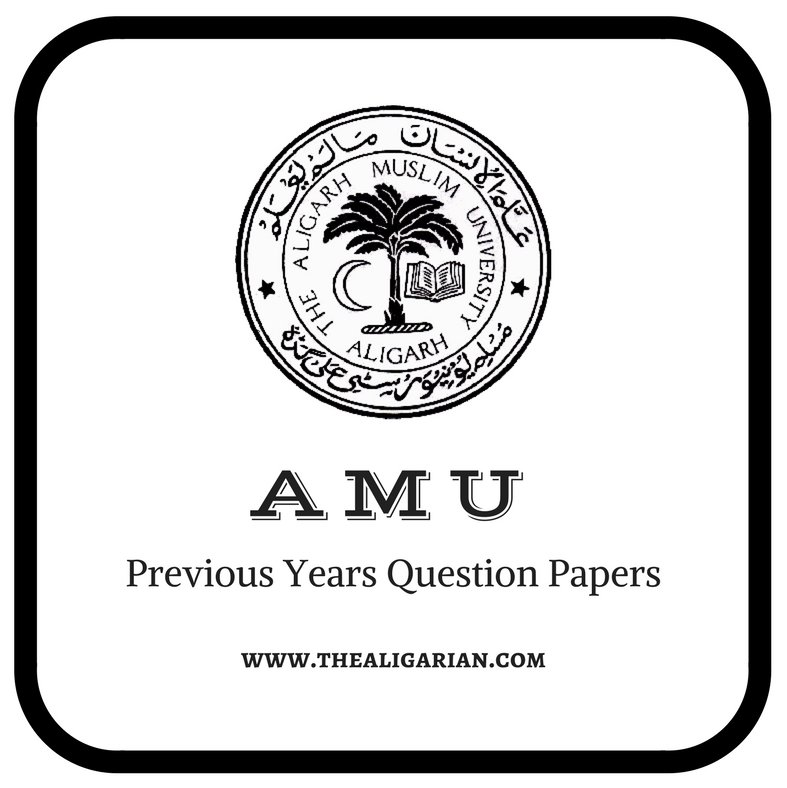Aligarh, January 26: A 1.5 tonne ‘Time Capsule’ encapsulating the chequered history of Aligarh Muslim University (AMU) history spanning over a century was today buried 30 feet deep in the park opposite the Victoria Gate to mark the Republic Day celebrations and the eventful centenary year of the university.
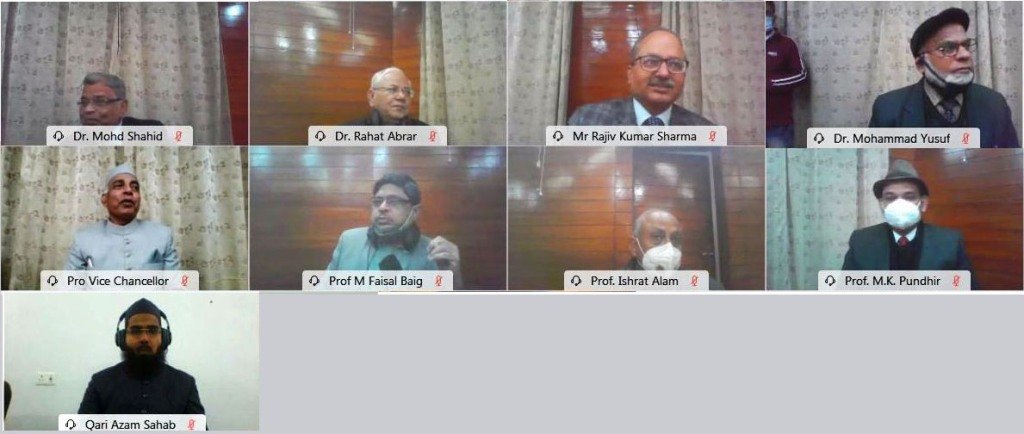
The historic cache of information built with high tempered steel for the communication with future generations, contains a copy of Sir Syed Album (by Khaliq Ahmad Nizami); essays and speeches relating to the Mohammadan Anglo-Oriental College, Aligarh from 1875 to 1919 (compiled by Nawab Mohsin ul Mulk); History of MAO College, Aligarh (by Theodore Morrison); The Life and Work of Syed Ahmad Khan (by GFI Graham); Glimpses of Muslim Education in India, Vol. 1 and 2 (By Prof Shan Mohammad); The Aligarh Muslim University ACT XL of 1920 and Statutes of the University; Syed Ahmad Khan (by Prof K A Nizami); Jahan-e-Syed (by Prof Mohammad Asim Siddiqui and Dr Rahat Abrar); Hayat-e-Jawed (by Altaf Husain Hali-Urdu); Hayat-e-Jawed (translated by Prof Rafi Ahmad Alavi in English; Hayat-e-Jawed (translated by Dr Rajeev Lochan Naath Shukl in Hindi); History of MAO College, Aligarh (by S K Bhatnagar); Convocation Address by Dr APJ Abdul Kalam; Convocations at a Glance (1922-2018); Mohammadan Anglo-Oriental College Calendar (1911-1912); Aligarh Muslim University Calendar (1932); AMU Diary-2020; single colour print out of Aligarh Muslim University campus, satellite image captured by Cartosat-2 on 28 October, 2018; list of Chancellors and Vice Chancellors of AMU; chronological history of AMU by Dr Rahat Abrar (1920-2020); postal stamp and speech of Prime Minister, Shri Narendra Modi in Centenary celebrations on December 22, 2020 and contents and progress work of the Time Capsule.
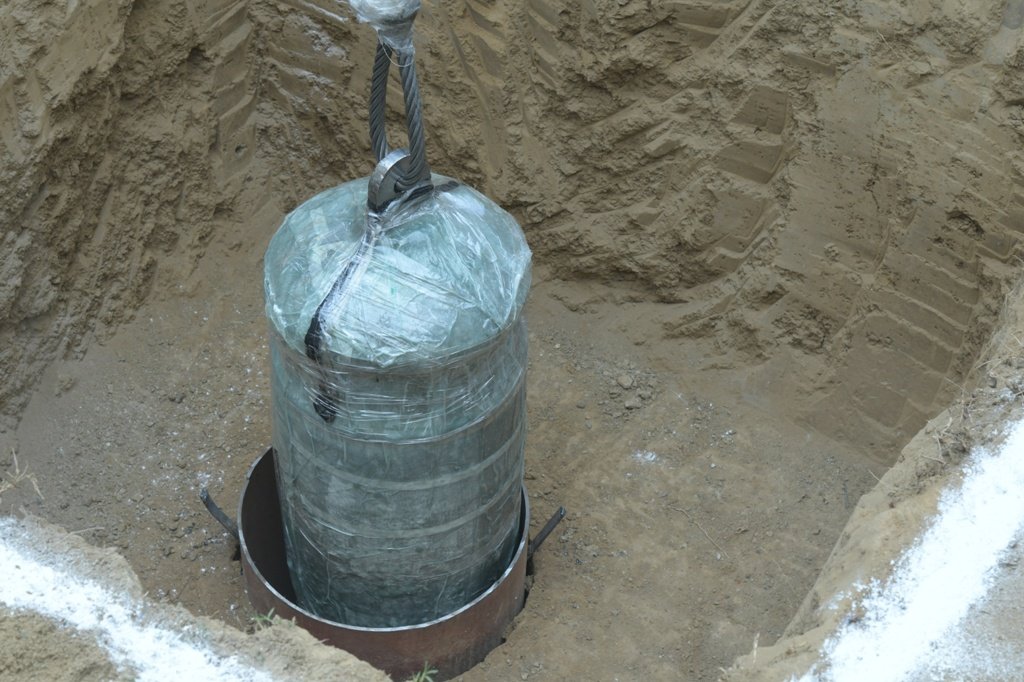
“This time capsule is for the benefit of future generations and it includes the salient features of the glorious history of AMU,” said AMU Vice-Chancellor, Professor Tariq Mansoor, while presiding over the online function.
He added that the most modern methods of preservation of the documents have been used. The papers in the capsule are preserved by making them acid-free and with the addition of some chemicals.
Prof Mansoor pointed out that the line of demarcation between prehistoric and historical times is crossed when people cease to live only in the present and become consciously interested both in their past and future.
“History begins with the handing down of tradition, and tradition means the carrying of the habits and lessons of the past into the future,” said the Vice-Chancellor emphasising the need of keeping the records of the past for future.
Quoting George Santayana, the Vice-Chancellor said, ‘those who cannot remember the past are condemned to repeat it.’
Meanwhile, he also informed that a committee has been constituted to sort out the modalities for excavating a capsule buried on January 8, 1877, by Lord Lytton (the then Viceroy and Governor-General of India) during the foundation stone ceremony of the MAO College.
He also spoke on the works of 5th century BC historians, Herodotus and Thucydides, who helped form the foundations for the modern study of human history and the meticulous methods of Egyptians for preserving history.
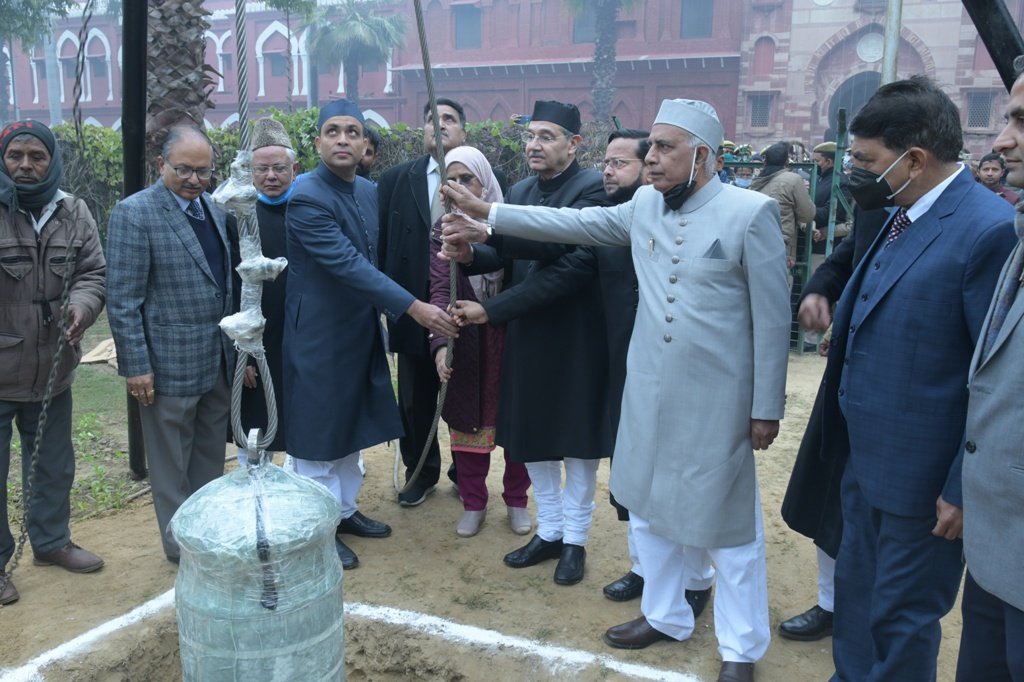
The Vice-Chancellor extended thanks to the Time Capsule committee members, AMU Registrar, Mr Abdul Hamid (IPS), Prof Mirza Faisal S Baig (Chairman, Department of Mechanical Engineering), Prof M K Pundhir (Department of History), Dr Rahat Abrar (Former Director, Urdu Academy), Rajiv Kumar Sharma (University Engineer), Dr Mohd Shahid (Deputy Director, Sir Syed Academy), Prof Ishrat Alam (Chairman, Department of History), Dr Mohammad Yusuf (University Librarian), Dr Mohammad Nadeem (Department of Computer Science), Dr Mohd Irfan (Department of Museology), Dr Rizwan Ahmad (Department of Remote Sensing and GIS Applications), Dr Parvez Mehmood (Director, Computer Centre) and Mr Phool Chand Gond (IIT Kanpur).
AMU Registrar, Mr Abdul Hamid (IPS) conducted the programme and highlighted the work of Time Capsule committee.


